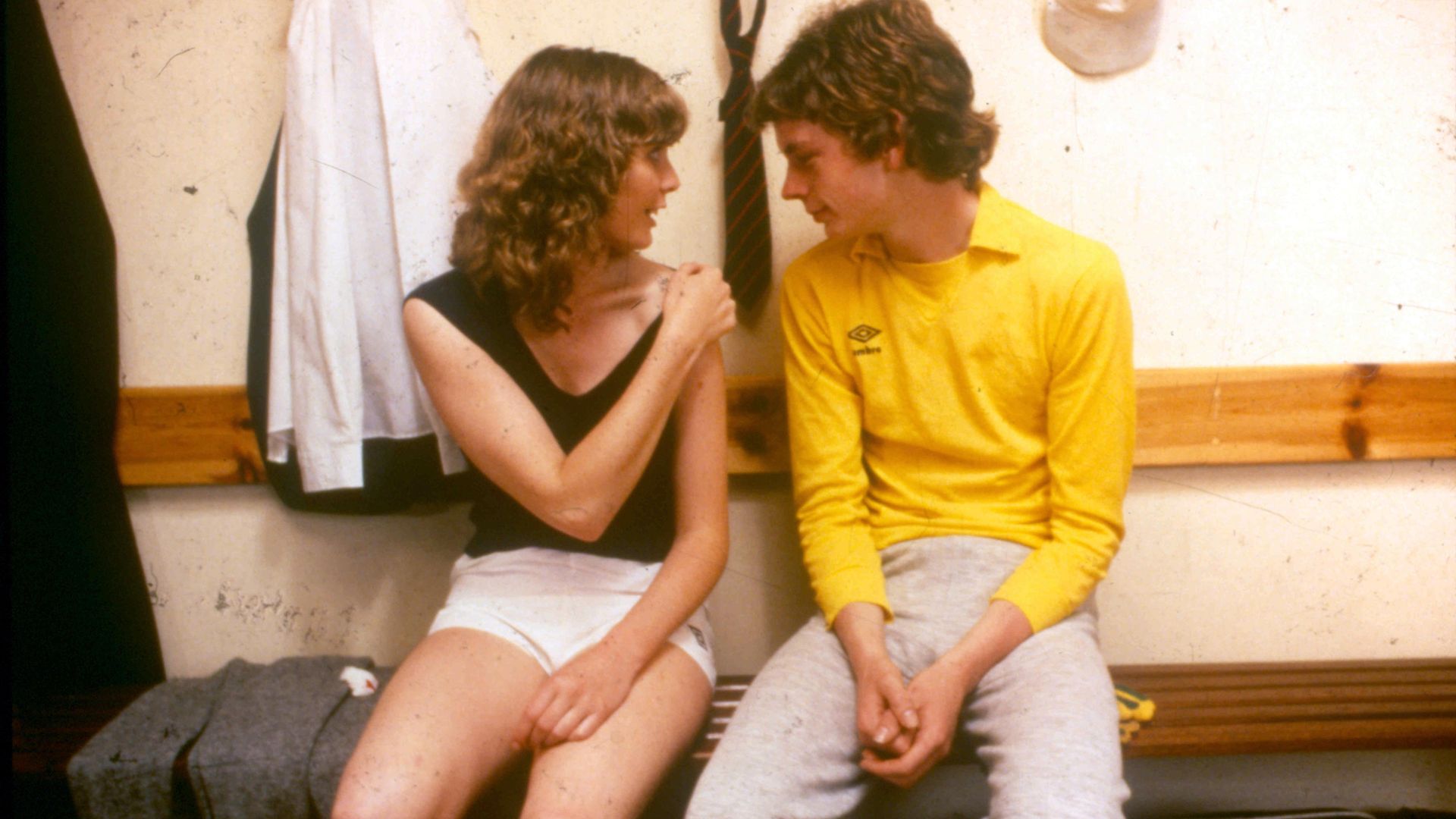
As Gregory’s Girl turns 40, Richard Luck chronicles his decades-long love affair with Bill Forsyth’s masterpiece
It was made for next to nothing, it starred nobody famous and it was written and directed by a man whose only previous film had been seen by next to nobody south of the border. Still, no sooner had it been released on St George’s Day 1981 – after a well-received run at the previous year’s London Film Festival – than Bill Forsyth’s Gregory’s Girl was well on the way to becoming a very big deal.
Such was the affection lavished upon the story of a boy who loses his place on the school football team to the girl of his dream that, come that summer, Gregory’s Girl was playing on a double-bill with Chariots Of Fire, the Hugh Hudson epic that went on to land the Best Picture Oscar. It was at that ceremony that Chariots screenwriter Colin Welland celebrated his Best Original Screenplay triumph with the cry “The British are coming!”
Alas, this would prove somewhat premature. However, 40 years on from its release, the fondness that exists for Gregory’s Girl shows no signs of dimming.
On the contrary, when a clip from the film aired during the London 2012 Opening Ceremony, Frank Cottrell Boyce – who wrote the extravaganza – was delighted to hear a sigh go round the rammed Olympic Stadium. Sure, Chariots Of Fire might have won big at the Academy Awards but it’s Forsyth’s picture that won the battle for our hearts and minds. And to think, the whole thing was almost undone by a bar fight at the Glasgow College of Technology.
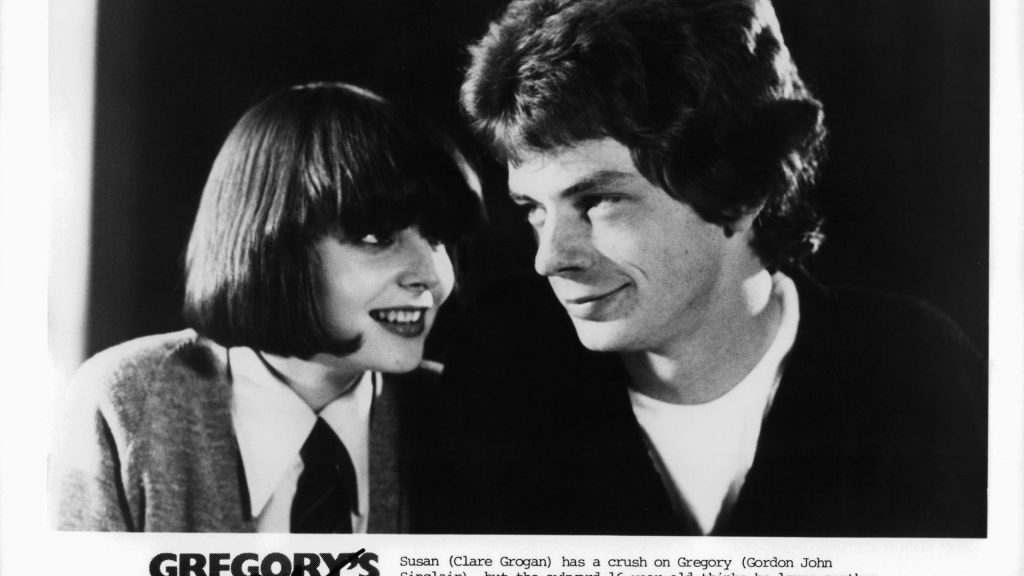
Yes, Gregory’s Girl could have been a very different film indeed had Bill Forsyth been unable to get around the facial injuries Clare Grogan sustained during the aforementioned affray. As the nearest thing the film had to a big name – Grogan’s band Altered Images was taking off even as she was making the movie, although she kept her second life hidden from the filmmakers – it could’ve severely hampered the picture had the execs had their way and recast the pivotal part of Susan.
When you’re a filmmaker working with a budget of barely £200,000, you get used to being inventive. So it was that Forsyth simply chose to shoot Grogan on the unscarred side of her face wherever possible; the miracle of Derma Wax make-up came to his aid whenever it wasn’t.
Forsyth’s loyalty to his co-leading lady wouldn’t have surprised John Gordon Sinclair, Robert Buchanan, Billy Greenlees and Alan Love, the young stars of the director’s debut picture – 1979’s That Sinking Feeling – whose services he retained for Gregory. At 6′ 2” and barely 10 stone soaking wet, Gordon John Sinclair – as he was then billed – couldn’t been more perfect as a gawky teen who can no more control his limbs than his emotions.
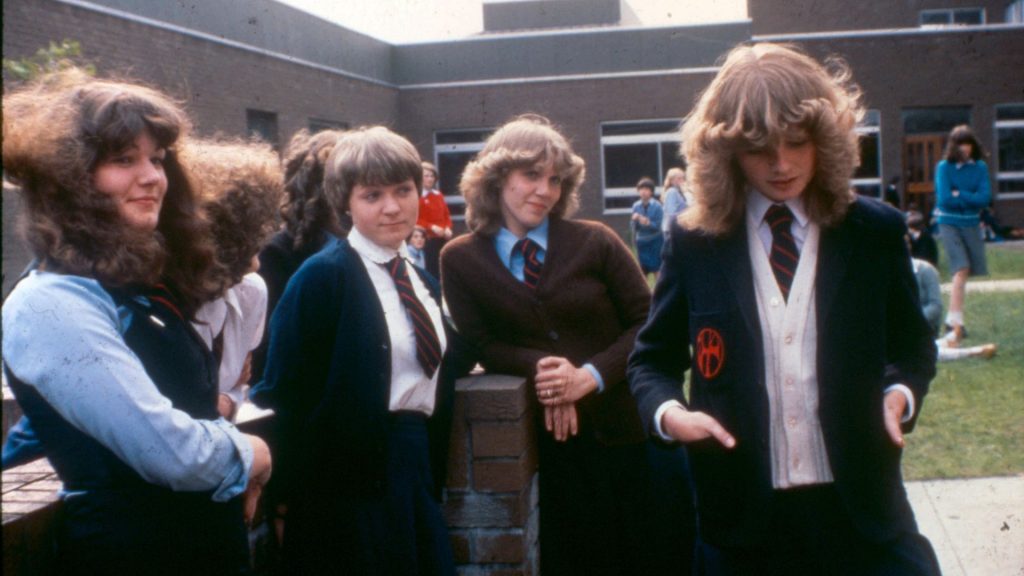
His girl Dorothy, meanwhile, was played by Dee Hepburn whom Forsyth recruited from the Glasgow Youth Theatre. With her character taking over from Gregory as the school’s centre forward, Hepburn was sent to train with Scotland and Partick Thistle keeper Alan Rough. Cumbersome and error-prone, Rough nevertheless managed to make the actress look comfortable on the ball.
And then the magic happened. For with a winning script and actors who couldn’t have been more perfect for their parts, Bill Forsyth pulled off that rare feat of making a movie that was equal parts witty and warm. As John Gordon Sinclair told The Guardian’s Jack Watkins in 2015, “Shooting was fun: it never felt like work. You knew you were getting it right because you’d see Bill’s shoulders shaking with laughter behind the camera. I had to ask him to move out of my eyeline, because it would get quite distracting.”
That there was something in the air might also explain the happy accidents from which the film benefitted. Take Andy and the equally hapless Charlie (Graham Thompson) and their dream of hitchhiking to Venezuela.
Rab Buchanan: “Bill said, ‘Cut! Cut! Adrienne [designer Adrienne Atkinson], you’ve spelt ‘Caracas’ wrong [on the boys’ handmade sign].’ And she was like, ‘Oh God, I’m sorry, I’m sorry! I’ll do it again.’
“Then Bill said, ‘Hold on, hold on. It’s spelt wrong. We’ve got a couple of minutes…'” And that’s how the director ended up with the memorable scene where Charlie points out to Andy that their sign was spelt incorrectly, the sign two teenaged boys were using to hitchhike to South America having been lead to believe that, in Caracas, women outnumber men three-to-one.
As with Forsyth’s follow-up feature Local Hero, there’s really is something of Ealing about his Cumbernauld-set romantic comedy. Then again, you imagine Alec Guinness and Stanley Holloway wouldn’t have known where to look had The Lavender Hill Mob opened as Gregory’s Girl does with a scene of four teenage boys spying on a nurse while she changes out of her work things (“Transmit: tell her to take off her bra.”).
If that doesn’t sound like a particularly charming sequence, well, that’s one of the remarkable things about Gregory’s Girl – it is at times as crass as many an American teen movie. From Gregory’s best friend Andy recounting the highlights of their peeping tomfoolery – “Tits, bum, fanny, the lot!” – to the teen’s upset over the team’s new striker – “If women were meant to play football, they’d have their tits somewhere else!” – these aren’t terribly reconstructed young people. What they are, however, is really rather nice.
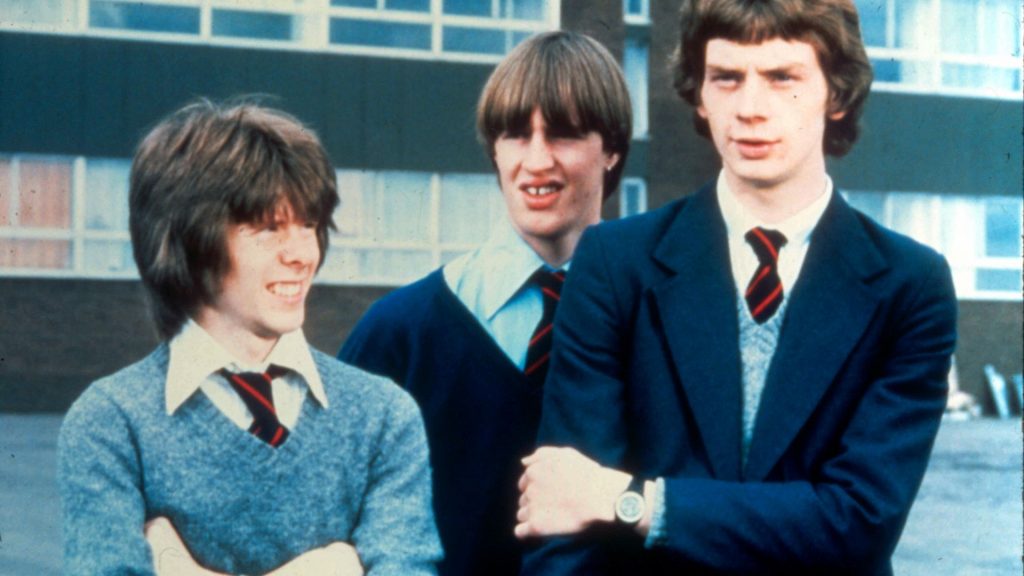
When asked why he was such a big fan of the film, top critic Barry Norman explained that it had a lot to do with the fact Bill Forsyth doesn’t introduce us to anyone unpleasant. And aside from their obsession with girls, Gregory and his classmates are very decent fellows indeed. Gregory himself has a particularly touching relationship with his worldly-wise younger sister Madeline, played by Allison Forster. (“Hard work being in love, eh? Especially when you don’t know which girl it is.”)
The school staff are also a joy, whether it’s PE teacher Phil Menzies (Jake D’Arcy) teaching Dorothy how to trap a ball with her bum through the medium of dance or headmaster and Scottish comedy god Chic Murray indulging his passions for doughnuts and the piano. (“Off you go, you small boys!”)
A film that advocates vivid descriptions of veal farming as a seduction technique, Gregory’s Girl‘s plot is equal parts coherent and disarming, but it’s in its moments that the picture truly succeeds. From the penguin waddling the school corridors in search of the right room, to the kids trading everything from pastries to portraits of Dorothy in the school toilets, it conjures up an image of school life that’s familiar to all without being specific to any. And if in Sinclair, it has a lead capable of raising laughs just by running, Dee Hepburn and Clare Grogan simply couldn’t be better as the young woman our hero wants and the one he actually needs.

The emotional weight of the movie certainly told on the cast, as John Gordon Sinclair recalls; “I especially remember the scene after [Gregory and Susan’s] date in the park, where there’s a shot of us walking off into the sunset. Clare Grogan and I were both in tears. It was the last day of filming. It was all over. This magical bubble we’d been in was about to burst.” And when it did burst, the wasn’t so much a polite pop as the most welcome sort of explosion.
An artistic success by anyone’s standards, Gregory’s Girl was also a bona fide box-office triumph, banking over £20 million in the UK alone. Rather more surprising was the fact the film found an audience across the Atlantic, a coup in large part accomplished by the hiring of voice-over expert Robert Rietti who had the cast re-record their lines only with softer accents.
Kind words from US celebrity critics Gene Siskel and Roger Ebert would also prove helpful. “It’s one of the rare movies that has the courage to admit that some teenagers can be immature and insecure,” enthused the latter. “It remembers adolescence, it observes it lovingly with sympathy and good humour and, with what teenage boys probably need most, compassion.” So pretty much everything that that summer’s other smash-hit teen comedy – the raunchy, critically-panned Canadian picture Porky’s – didn’t have going for it.
With Forsyth receiving the BAFTA for Best Original Screenplay and Hepburn being named the Variety Club’s actress of the year, Gregory’s Girl triumphed on every front. But while its director might have gone on to capture lightning in a bottle a second time with the Whisky Galore-esque Local Hero and its cast spiralled off into obscurity, modest success and/or bona fide pop stardom, the film has never gone away.
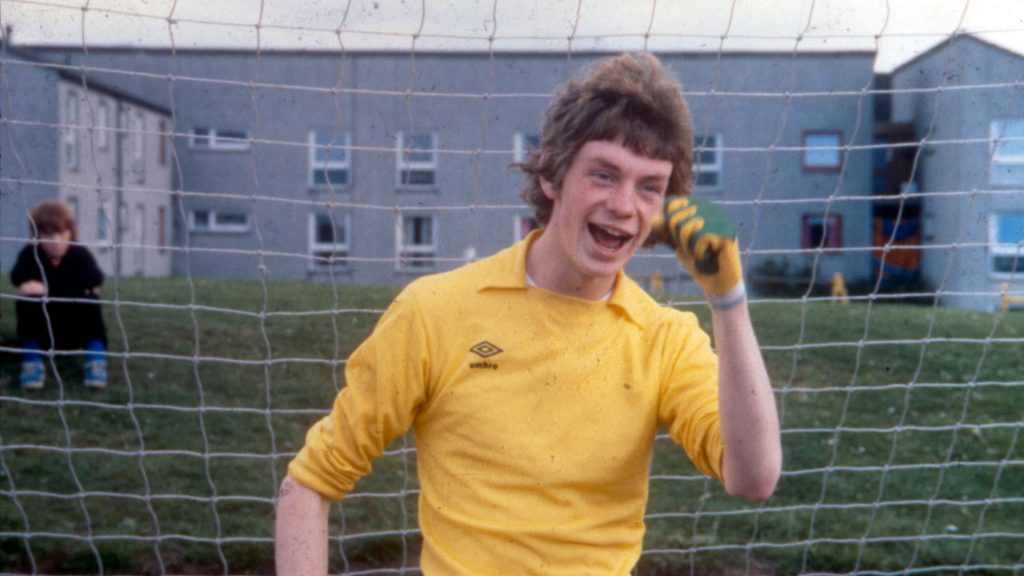
When reunions are held, they sell out at the ticket office and are well attended by cast and crew members alike. And as for that cameo appearance at the London 2012 Opening Ceremony, Gregory’s Girl wasn’t the only British film celebrated that night but it was the only one to elicit an audience-wide sigh.
As for me and Gregory’s Girl, I could go on and on but I’ve already taken up too many elephants. Thing is, just as I couldn’t love someone who doesn’t love Withnail & I, I’d have a hard time giving my heart to anyone who didn’t care dearly for Gregory’s Girl.
They’re powerful things, first loves, and Bill Forsyth’s picture’s had a hold on me ever since I first saw it at the late lamented Welwyn Embassy Cinema on its original release.
And for a final word on love and Gregory’s Girl, here’s our man and his cookery-obsessed brother Steve (Bill Greenlees):
Gregory: “Have you ever been in love? I’m in love.”
Steve: “Since when?”
Gregory: “Half an hour ago. It’s great. I feel restless and dizzy. It’s wonderful. I bet I won’t get any sleep tonight.”
Steve: “That sounds more like indigestion…”
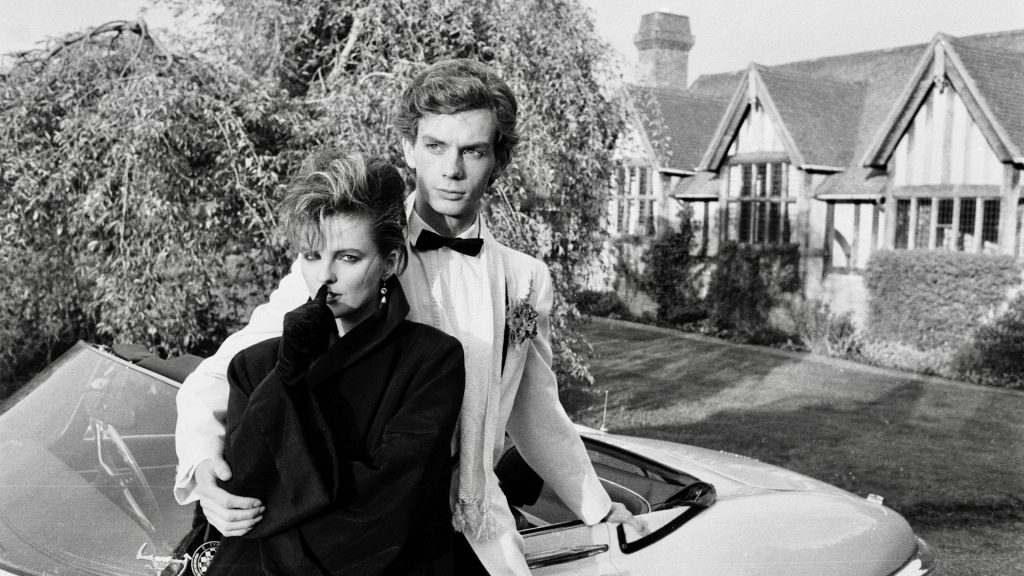
Whatever happened to Gregory’s Girl (and friends)?
John Gordon Sinclair Reunited with Forsyth for Local Hero and with Clare Grogan for the video for Altered Images’ Bring Me Closer. A success on the West End stage, he showed up as the world’s least likely Navy SEAL in World War Z before landing a recurring role in Alibi’s debut crime drama Traces.
Bill Forsyth Followed Gregory with the equally delightful Local Hero and the somewhat grittier Comfort And Joy. A few years spent in the States yielded cult hits Housekeeping and Breaking In before the ambitious, era-spanning Being Human all but sank without trace. The uncalled-for sequel Gregory’s Two Girls (1999) remains his most recent theatrical release.
Dee Hepburn Pretty much withdrew from the world of acting after a two-year stint on Crossroads in the mid-80s. A mother of two, she still lives in her hometown of East Kilbride where she now works in business development.
Clare Grogan Red Dwarf‘s original Kristine Kochanski, Clare starred in Forsyth’s Comfort And Joy, a fictionalised account of Glasgow’s improbable ice-cream war. Still acting and presenting, her Altered Images hits have cropped up in everything from Peep Show to David Simon’s The Deuce. Says she finds Gregory’s Girl “too much” to watch the whole way through, a feeling you’d have to be dead not to appreciate.
Robert Buchanan Aka the girl-crazy Andy, Rab Buchanan also appeared in Comfort And Joy. Left acting to work behind-the-scenes at, among other places, Stirling’s Tollbooth Theatre. Modelled a very nice ‘Tits, Bum, Fanny, The Lot!’ T-shirt at a Gregory’s Girl anniversary screening in 2010.
Jake D’Arcy Gregory’s whistle-happy PE teacher has appeared in any number of quality TV dramas and comedies. Arguably at his very best as the memorably monikered Fud O’Donnell in the John Byrne-scripted Tutti Frutti. Altogether now, “Black and Decker, Black and Decker, Black and Decker…”
Allison Forster Gregory’s little sister emigrated to Canada the year of the film’s release and only discovered what a big deal both she and the movie had become when family members sent her press clippings. Still resident in Toronto, she remains very proud of the picture but hasn’t acted since.
Chic Murray The legendary Scottish stand-up passed away in 1985, aged just 65. A favourite Chic quip? “I met this chap at the Olympics. I said to him, ‘Excuse me but are you a pole vaulter?’. He replied, ‘No, I’m German, but how did you know my name was Walter.'”
Gregory’s Girl is available on DVD from Second Sight Films
What do you think? Have your say on this and more by emailing letters@theneweuropean.co.uk









